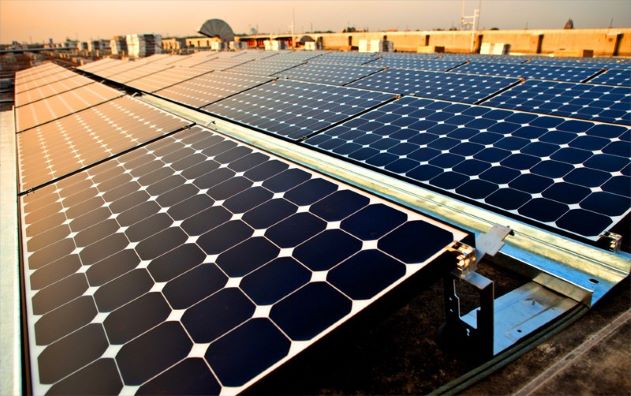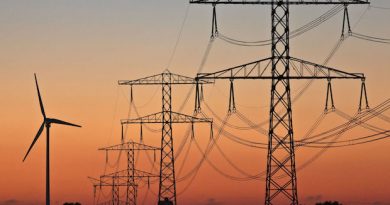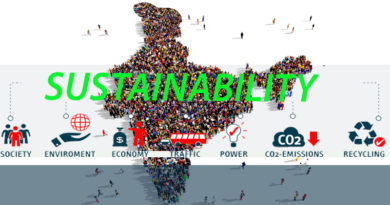Solar Industry’s Impending Waste Problem

A recent report by renewable energy consulting firm Bridge to India (BTI) said that the solar photovoltaic (PV) panels waste volume in India is estimated to grow to 200,000 tonnes by 2030 and around 1.8 million tonnes by 2050 – almost 200 times the weight of the Eiffel Tower.
India’s current solar power target is 100 gigawatts by 2022 which includes 40 GW rooftop and 60 GW through large and medium grid-connected solar power projects and India has advanced towards this target with the installed solar power capacity increasing from 2,631.93 MW in March 2014 to 28,180.71 MW in March 2019.
However, this also means the amount of solar panel waste has increased during this time, with cases of early retirement of the panels. The lifetime of each PV panel is usually 20-25 years. Panels may be discarded earlier because of site accidents and poor quality.
As per MNRE, it is estimated that for each MW of solar power, 75 MT (metric tonne) of PV modules are needed.
BTI’s report explains that a solar photovoltaic panel is essentially made up of glass, metal, silicon and polymer fractions. While glass and aluminium, together constituting around 80 percent of the total weight, are non-hazardous, a few other materials used in the panel, like polymers, lead and cadmium compounds, are potentially environmentally hazardous.
The report emphasised that if disposed off in an uncontrolled way, potential leaching of those hazardous materials at end-of-life can have negative environmental and health impacts.
“Leaching of lead has a huge environmental impact—loss in biodiversity, decreased growth and reproductive rates in plants and animals, and several other health hazards—adverse impact on kidney function, nervous, immune, reproductive and cardiovascular systems. Cadmium is a carcinogen with high toxicity as well as high accumulation potential in humans,” said the report.
It also stressed that the polymer component used in solar modules is difficult to recycle and can only be incinerated which again poses “a significant health and environmental risk due to the formation of highly corrosive gases at the incineration stage.”
“If landfilled inappropriately, waste and waste constituents can find ways into soil and water, resulting in a potentially damaging impact on the ecosystem,” it added.
Experts have been emphasising that while solar installations are growing at a robust rate, little attention has been paid to module recycling in India.
Lack of recycling Policy
Surbhi Singhvi of BTI, who is one of the authors of the report says that in India “right now there is no policy to deal with the waste from the solar sector in India.”
“The problem is not years away. It is right here right now. Developers have waste lying with them right now and this waste is mainly solar panels that get damaged in transportation or solar panels that were of poor quality that had to be replaced or damaged due to other reasons. This early life retirement of modules needs to be taken care of,” she said.
Recycling Viable
The report said that the reality is that the solar PV waste recycling is still at a nascent stage globally, both in terms of technical standards and physical infrastructure.
“The waste is usually sent to laminated glass and metal recyclers that recover 70-80 percent of the material by weight. Advanced recycling technologies can potentially push this up to 92 percent. Most materials other than glass, aluminium, and copper are usually not recovered and must be incinerated or landfilled. Unfortunately, PV module recycling is still not commercially viable,” the report said.
The biggest problem is that in India we don’t have the requisite recycling facilities that can recover these materials. Right now we are not even able to separate glass from the metal frame, leave alone taking out silver or silicon from the modules.
Singhvi stressed that for recycling to make commercial sense there need to be facilities all around India otherwise huge transportation cost would be involved – which is not viable.
The total estimated cost including transportation can vary between $400-600 (approximately Rs. Rs 28,000-42,000) per tonne, which is far above the value of the recovered material.
“If right practices are followed, there is a clear commercial and environmental gain. The right practices include using water efficiently in the cleaning of panels and proper recycling of solar panel waste,” she added.
Also, The MNRE’s draft blueprint notes that the recycling facilities for the solar panels with antimony-containing glass at the end of life is not yet available in the country. The draft is expected to be finalised soon after which environment ministry is expected to come out with a policy on it.
Proper recycling is important to justify the ‘green energy’ tag
Experts believe that there is no doubt regarding the benefits of solar power but they feel that to justify the ‘green energy’ tag, the solar sector needs to adopt a proper process to address critical issues like end-of-life recycling.
Satish Sinha, who is an associate director with Toxics Link, said that “no thought has been given to the expected waste from the solar sector.”
“In about 15-20 years from now, this waste could pose a serious threat on account of large volumes and the absence of an ecosystem comprising of policy framework and technology to manage this waste. The waste arisings are not only solar panels but also connectors, cables, storage devices etc. making it extremely complex to handle. It has always been the case that new materials or products are introduced in the market with little or no thought to its end of life management, finally passing the burden to society. Electronic waste is a case wherein the country pushed ahead with digitization and connectivity but did not plan for the end of life management of waste and is now struggling to find a meaningful solution,” he said.
The only respite, he explained, at present, India is not a major manufacturer of solar panels since most of it is manufactured abroad and is primarily only assembled in India.




